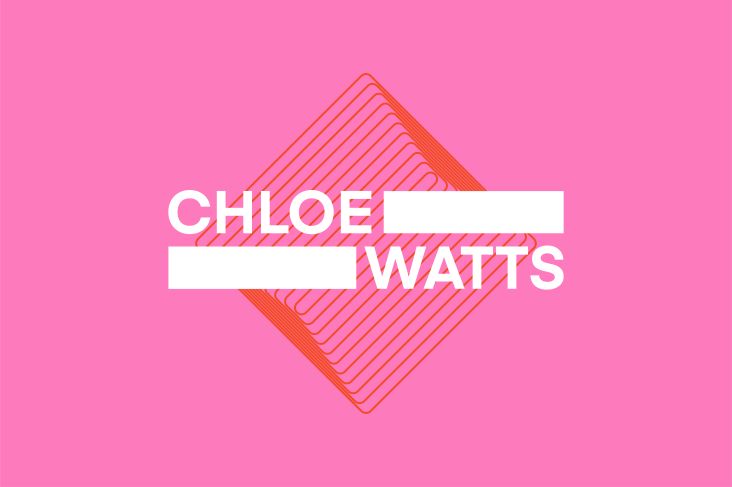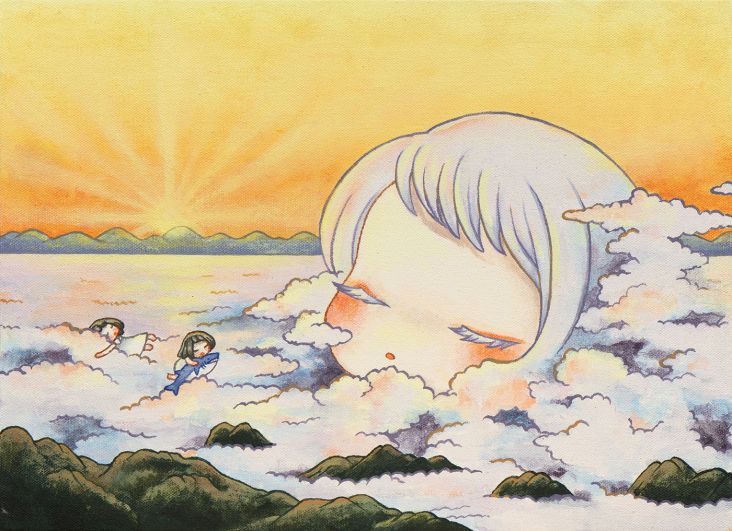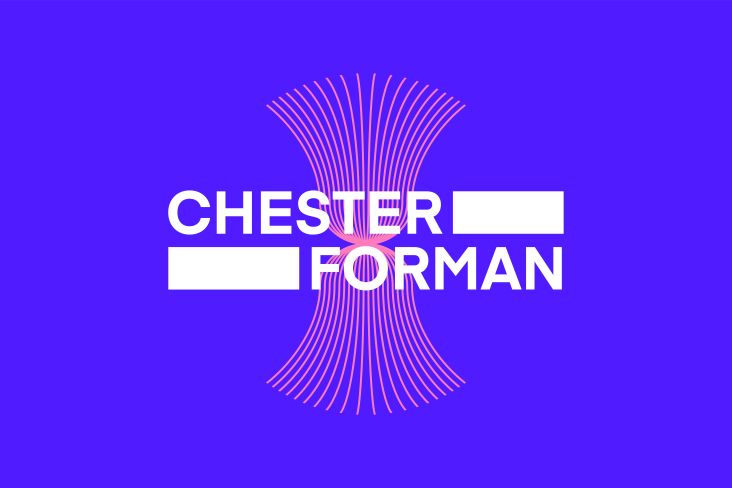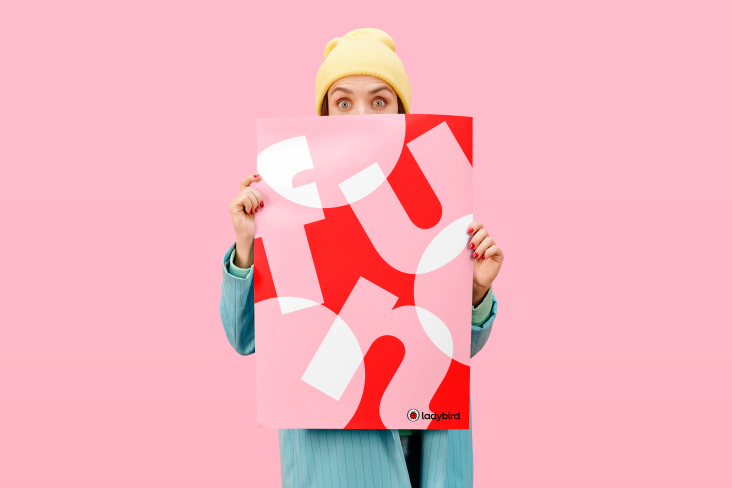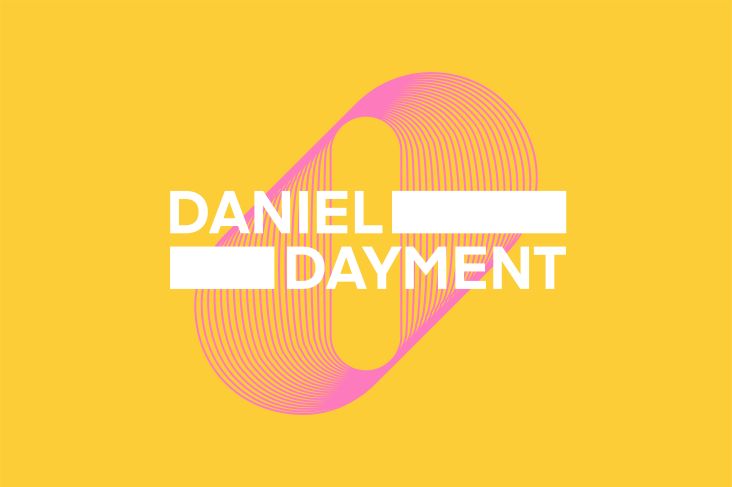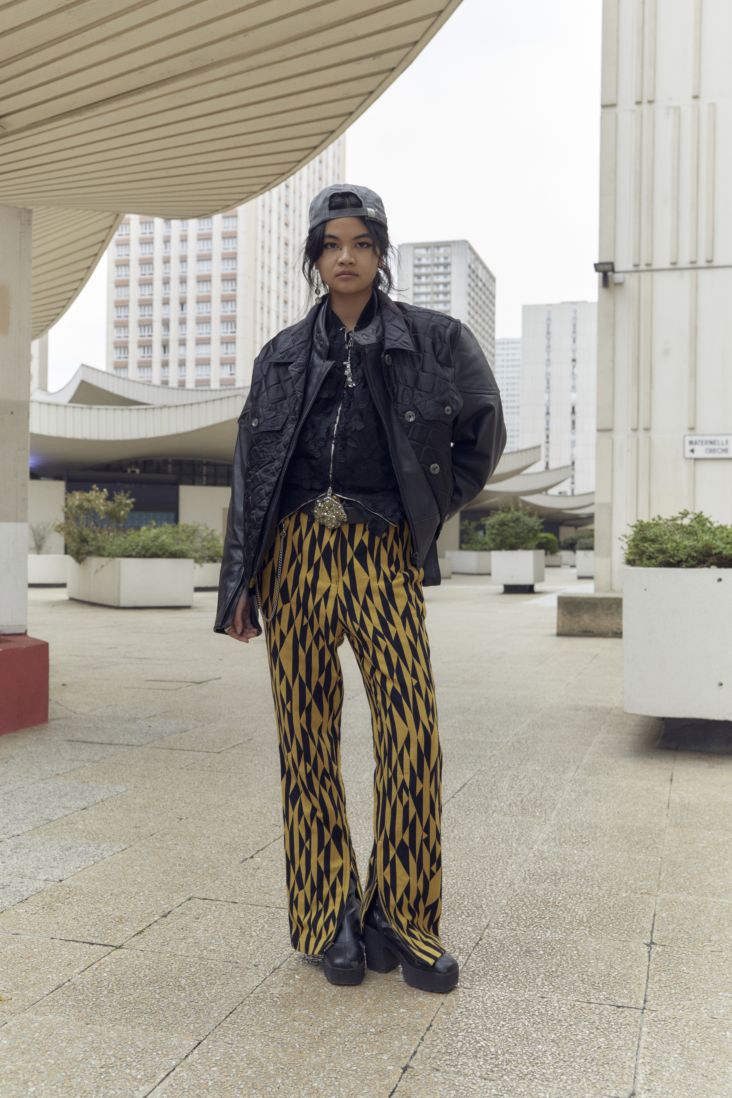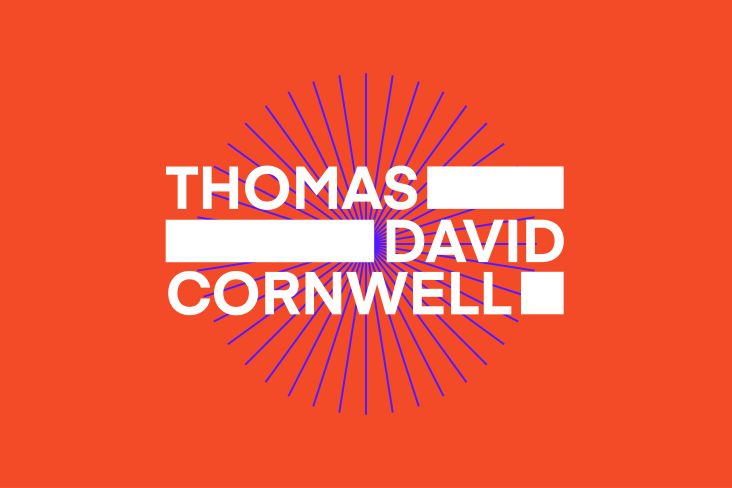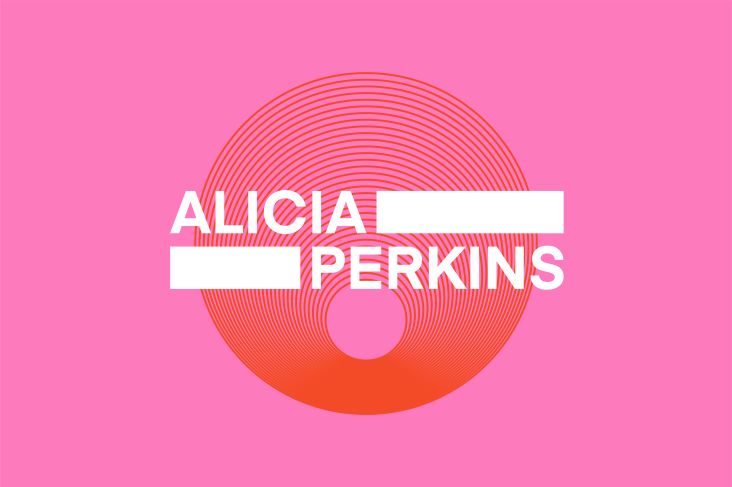Introducing: Bethany Williams on how difficult times can push you to produce your best work
Our new series focusing on graduate creatives continues with Bethany Williams from Central Saint Martins. Here, she talks openly about her mental health struggles, how the pandemic eventually led to her doing better work, and how she created an innovative graduate project split between augmented and digital worlds.
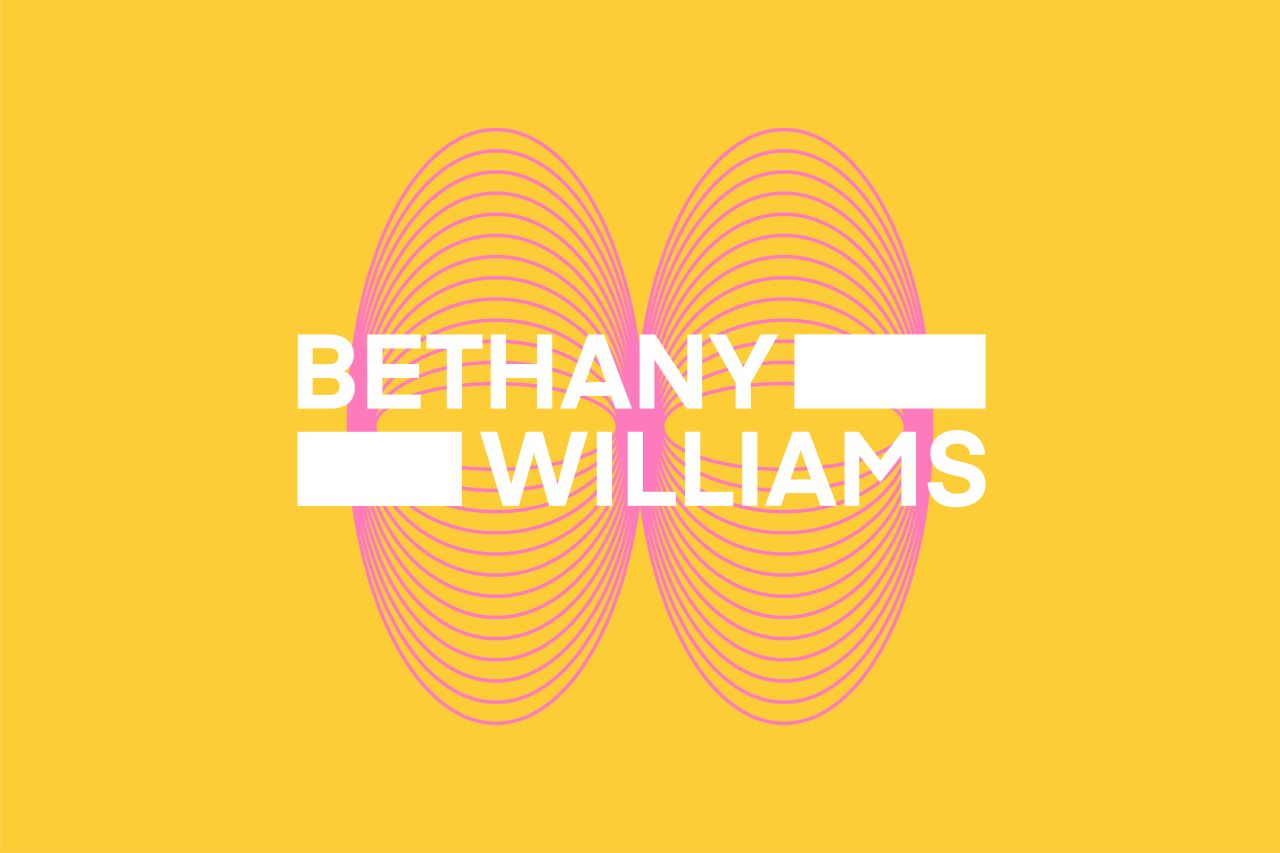
Want to keep up with the latest talent emerging from universities all over the country? You've come to the right place. Here at Creative Boom, we've been keeping our finger on the pulse by sorting through graduate showcases, and via a series of 12 interviews, we're introducing you to some of the names you need to know.
Today we're talking to Bethany Williams, who has recently graduated from her fashion design and knitwear studies at Central Saint Martins. Like most creatives leaving university this year, Bethany has faced immense hardships due to the pandemic. During our exclusive interview, though, she reveals how she overcame this challenge to produce work she's more proud of than ever.
This includes her graduate showcase piece, No Longer Human. Fusing augmented with digital realities, the work in this piece draws on Bethany's mental health issues and her desire to escape into virtual worlds. Sustainable, innovative and accessible, No Longer Human is a fascinating glimpse into what the future could hold for us all.
Where did you grow up? Tell us about your childhood.
I moved around a lot as a child. I spent time living in Sussex, Essex, Suffolk and back to Sussex again. It was definitely eye-opening moving from different areas with massively different demographics.
I didn't have the best childhood. I've struggled with mental health, trauma and disability from a young age. It took me a long time to come to terms with many things that have happened in my life. It's still something I struggle with occasionally now. Creativity has always been something that has helped me through, and it has helped me express myself, communicate with others, and offer some comfort.
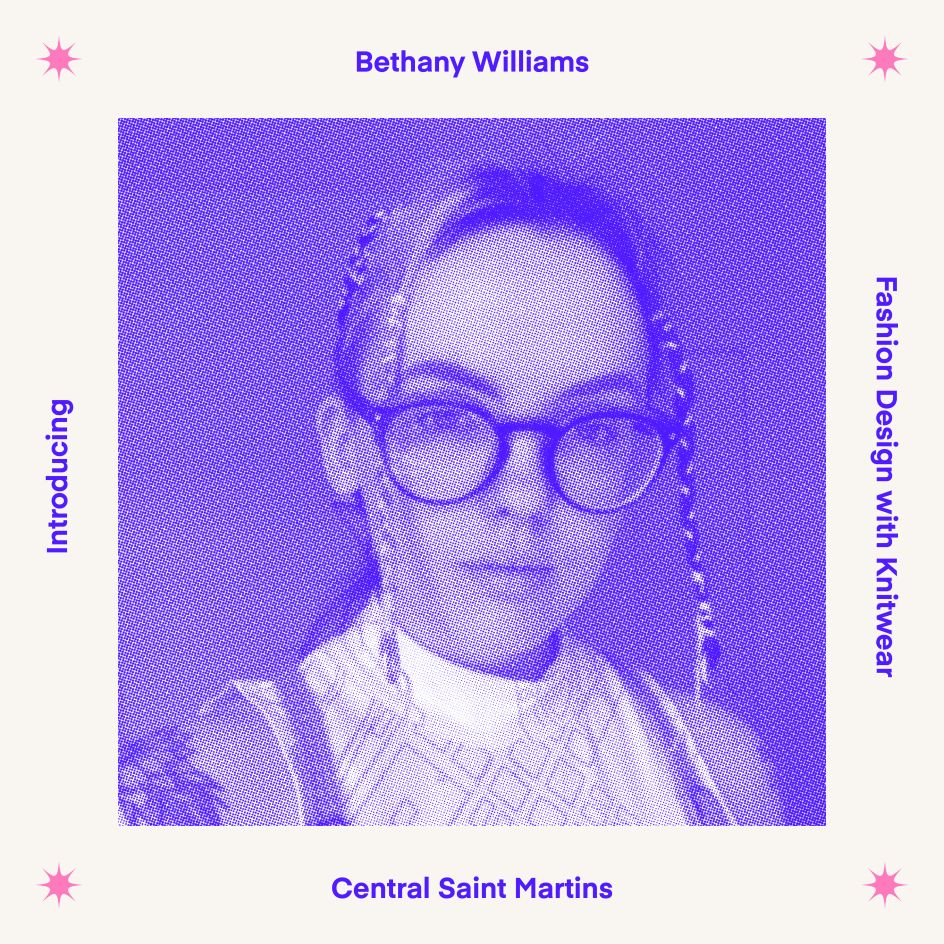
Can you tell us more about how you got into your creative discipline?
Growing up, I was never told the arts were an option later in life. I did well in academic subjects and was pushed in that direction. It wasn't until I became unwell around 15 that I realised I didn't want to suffer in a career I hated whilst also struggling with my health. I loved art, design and creating things. Fashion stood out to me the most. I was never really worried about fitting in. I was bullied a lot because of my health problems, queerness and appearance, but I am notoriously stubborn. So fashion became even more important to my identity. I think an element of it was also wanting to make the pieces I couldn't afford. I decided on fashion and never looked back.
Why did you choose your course and university?
It's hard to research fashion degrees without looking at Central Saint Martins. I remember looking at university courses at around 15 and coming across a YouTube video of a tour of the building when CSM had just moved into Granary Square. I fell in love instantly and began making plans. I would be lying if I didn't acknowledge the influence of CSM's reputation in my decision but ultimately, what sold me was the architecture. This anecdote always makes my tutors laugh.
I was lucky enough to be able to do my foundation year at CSM. I went in wanting to study womenswear but quickly realised it wasn't for me. I had taught myself how to crochet a few years earlier and began to introduce it into my work. Unfortunately, my grandmother passed away a few months before I started and left me her knitting machine, so I began to incorporate that too. I think it was knitwear that found me. I chose to apply for Fashion Design with Knitwear at CSM and was accepted, and got to spend my degree working alongside some amazing creatives.
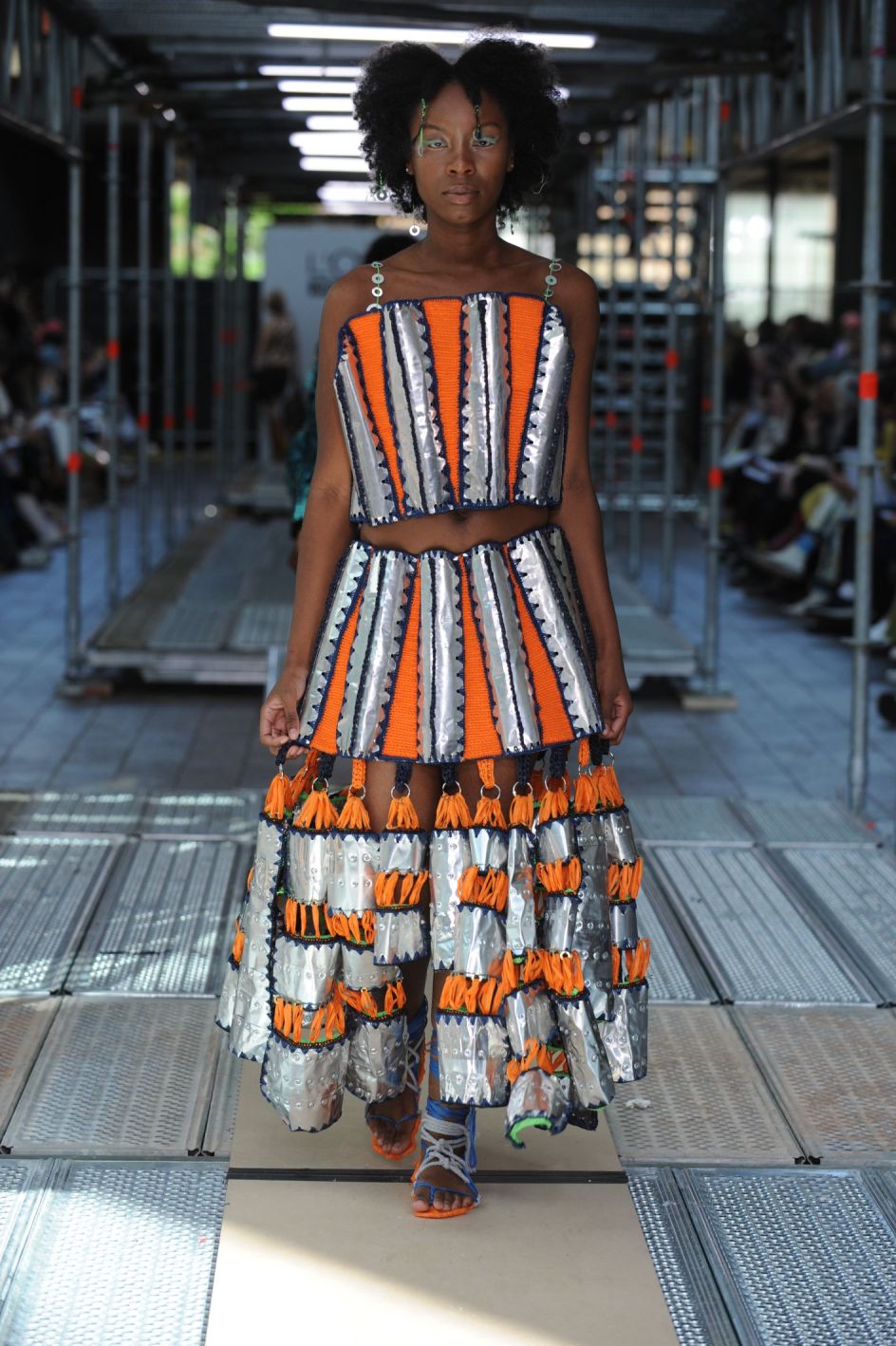
© Bethany Williams
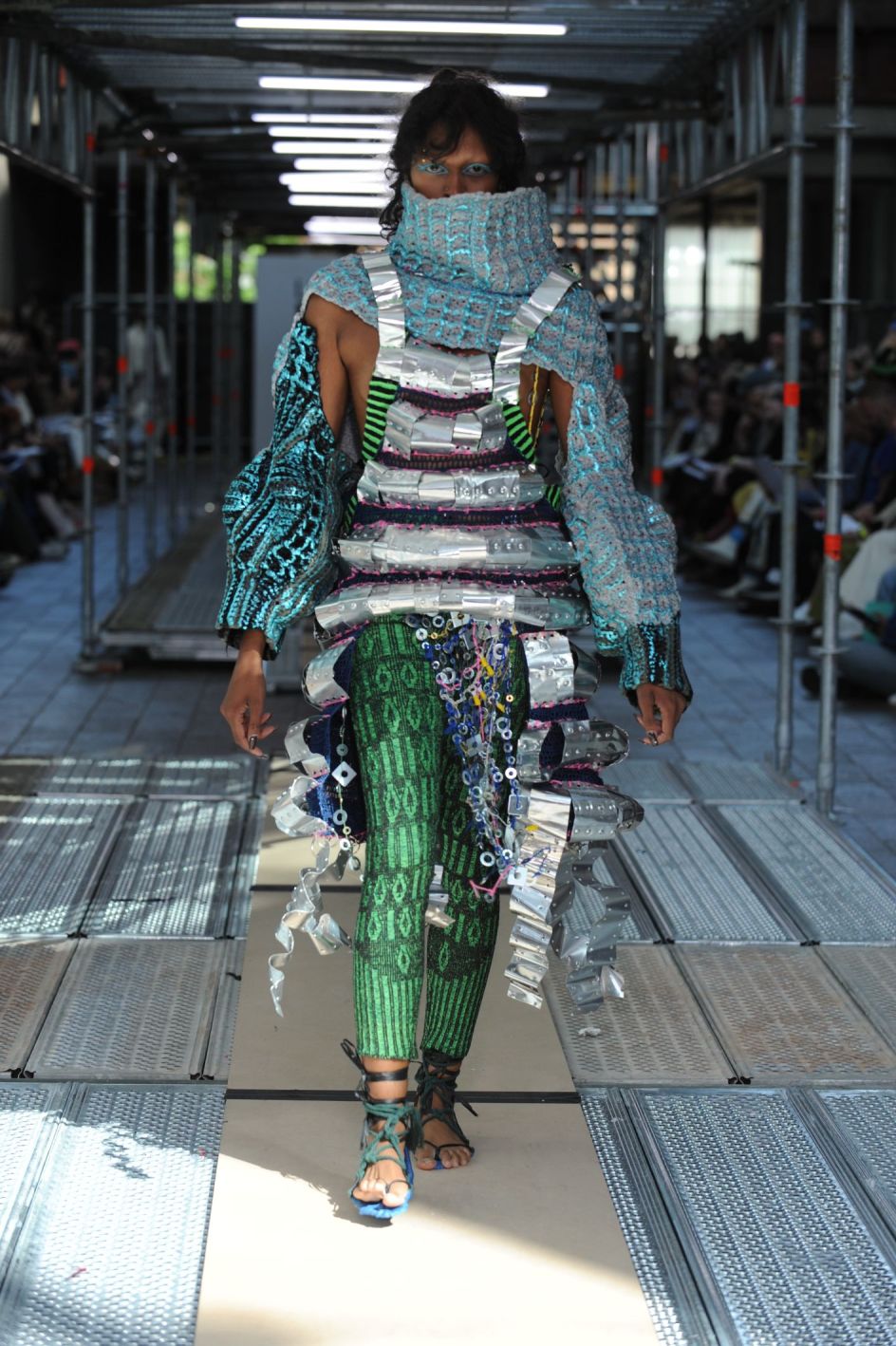
© Bethany Williams
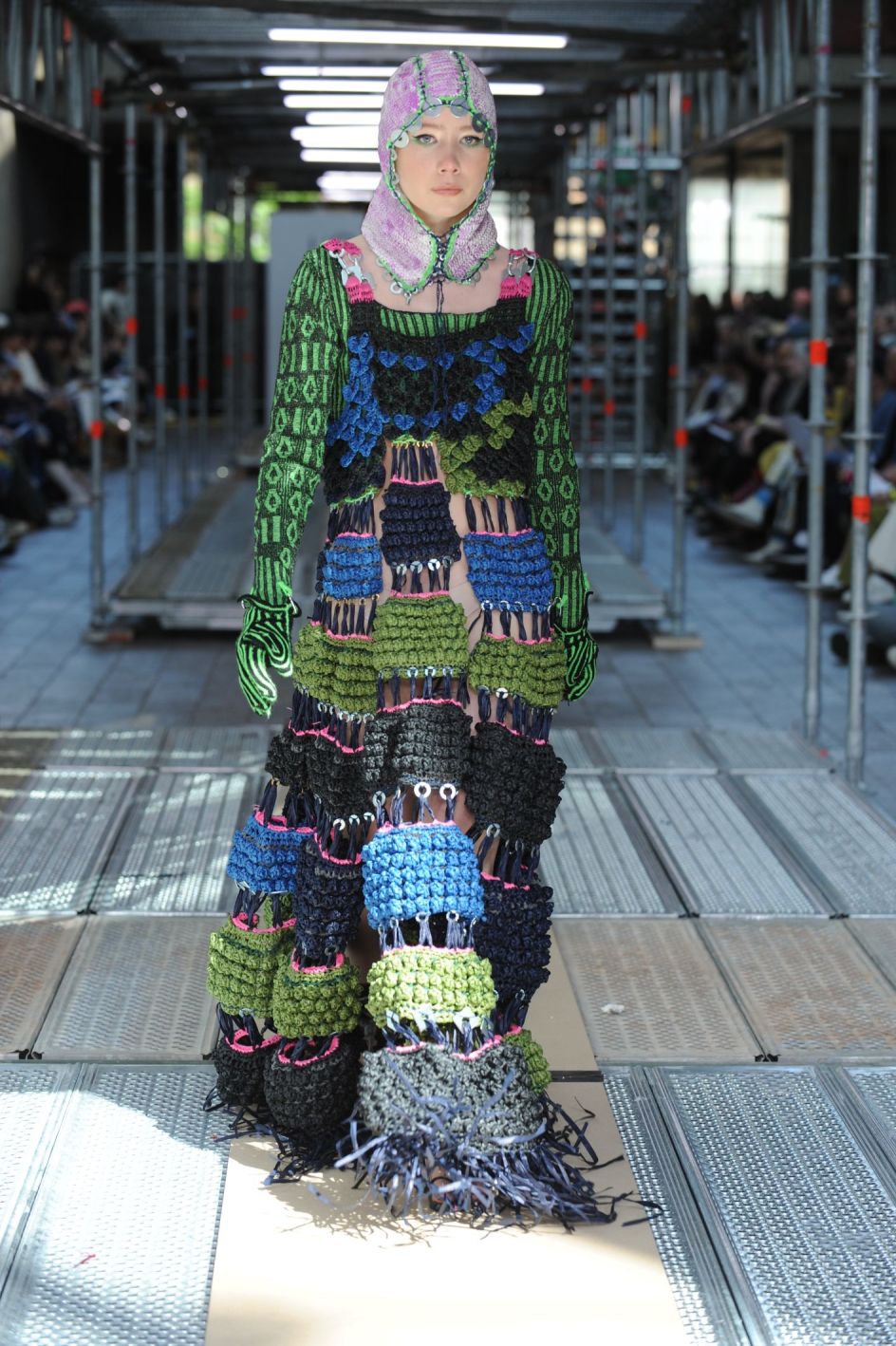
© Bethany Williams
What has the experience been like, especially during a global pandemic?
I continued to struggle with my health throughout my whole time at university. I already had to take some time off here and there, but when the pandemic hit, everything became terrifying. I had to withdraw from my placement year because I couldn't complete it as I was shielding. Then an additional year out because I couldn't risk getting Covid-19 on top of everything else. Deciding to defer my final year was heartbreaking. I had worked so hard and sacrificed so much to get my degree, and suddenly, it was on hold.
Ultimately, I believe it was the best decision I could have made. I became much more confident with my work and creative process. It gave me time to work on things without worrying if it was what the tutors wanted to see. I spent a lot of time by myself, which made me a lot more comfortable in my identity as a queer disabled creative. It allowed me to put myself first and not back down on accessibility issues that had been a problem before. I know my work has only improved because of all of this.
Don't try to create what you think others expect from you. Trust yourself and your instincts. You've made it this far for a reason.
You're displaying your work at the graduate show this month. Can you tell us about the project?
My collection is called 'No Longer Human'. It explores my world, how I cope with being disabled, and the trauma I've been through. To escape my pain and to cope with my C-PTSD, I choose to delve into virtual and augmented worlds. As a result, the barriers between worlds become blurred; I value my experiences across all realities equally.
Often my mental ill-health can make me feel detached from real life and humanity. I often wish not to be human and to fully escape into more accessible virtual worlds. I chose to explore this by linking fantasy and dystopian worlds with their real-world counterparts. It resulted in a collection that shows my yearning to protect my mind and body.
I used sustainable processes throughout my collection, including repurposed high voltage cables. As well as working perfectly to add armoured elements, it represents the link between the real and virtual worlds: power. I also intend to make a fully functional virtual version of my collection, as I believe virtual fashion is the future of accessibility and sustainability. My collection is also named after one of my favourite books by Osamu Dazai.
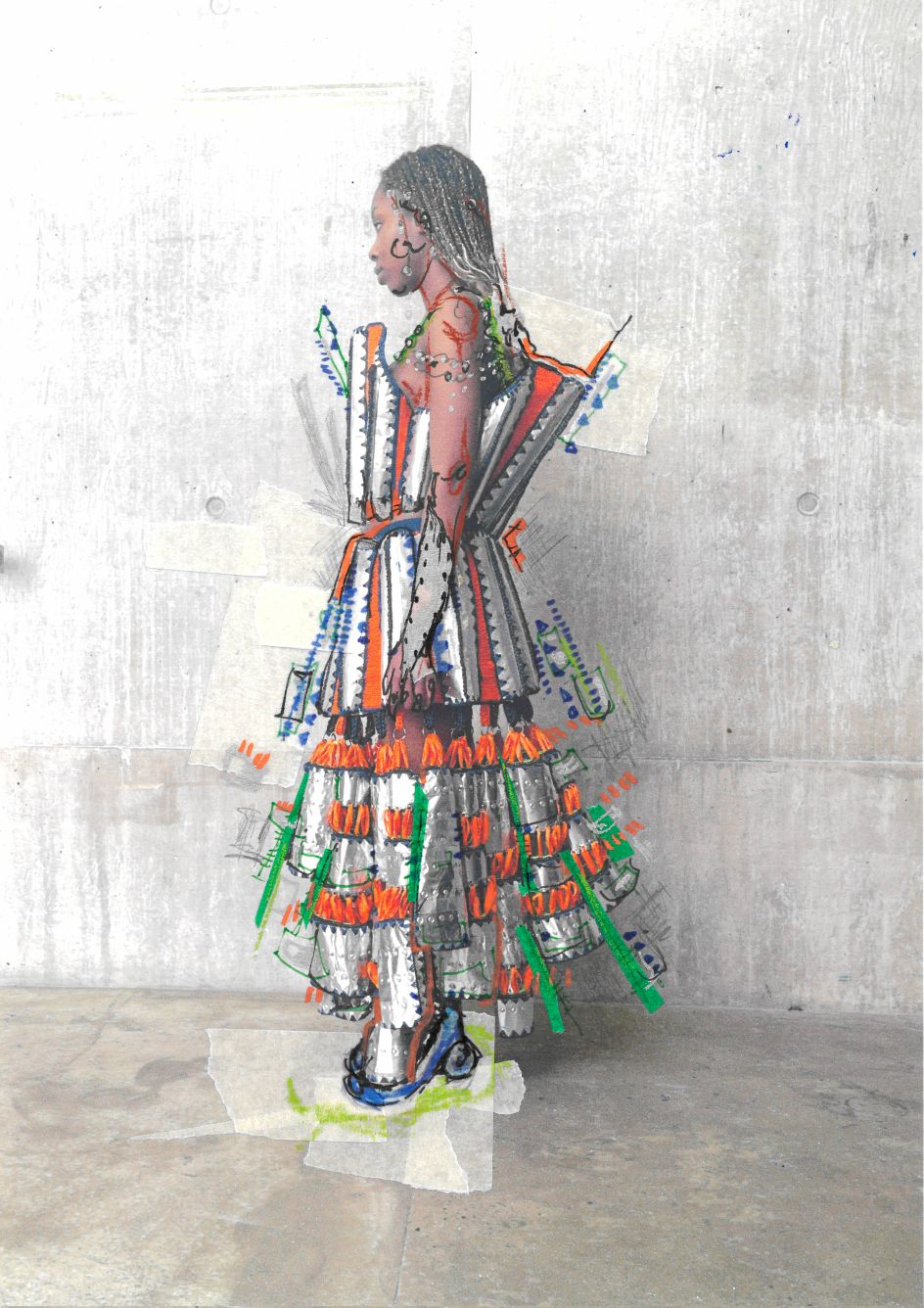
© Bethany Williams
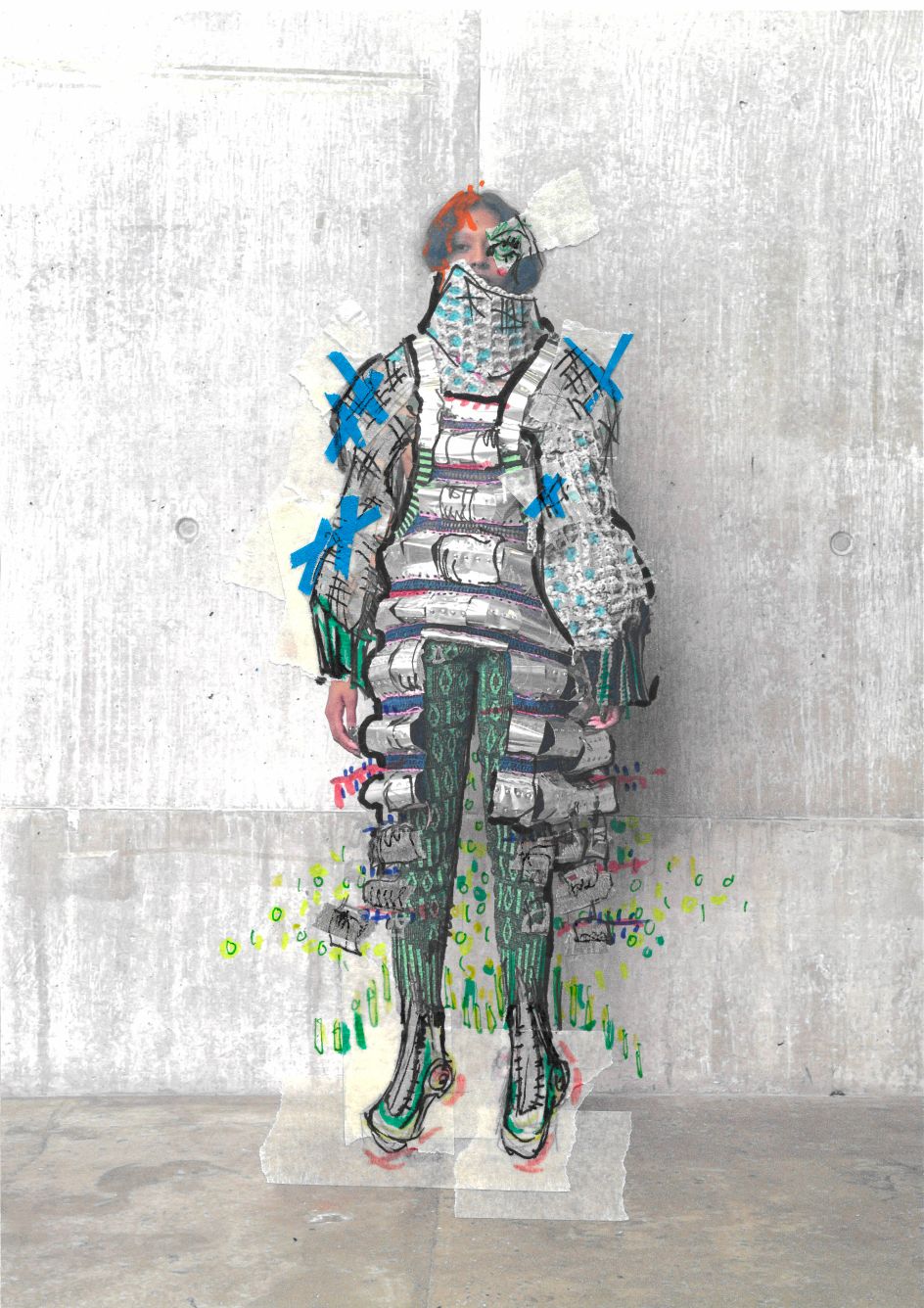
© Bethany Williams
Can you describe your style in your own words?
Beyond the binary; digital warriors with historical references and streetwear influences.
Who or what inspires you?
I love to find inspiration in my surroundings and experiences. It helps me understand the world in a way I otherwise can't. I also find a lot of inspiration in my dad's garage. He's an engineer who loves a bit of DIY and keeps anything he thinks could be useful. It's always fun to take things he's forgotten about or considers mundane and blindside him by transforming them into wearable pieces.
What do you hope to do with your career?
I hope to get my Master's next, alongside continuing to create bespoke knitwear pieces. I want to expand my current skill set and apply it to new areas to elevate my creative process. I'm not entirely sure what my end goal is, but I look forward to finding out.
How do you feel about graduating in the summer of 2022? What are your hopes?
I feel ready to explore my next chapter. I hope to continue onto my masters, reopen my commissions and keep making work that I enjoy and challenges me.
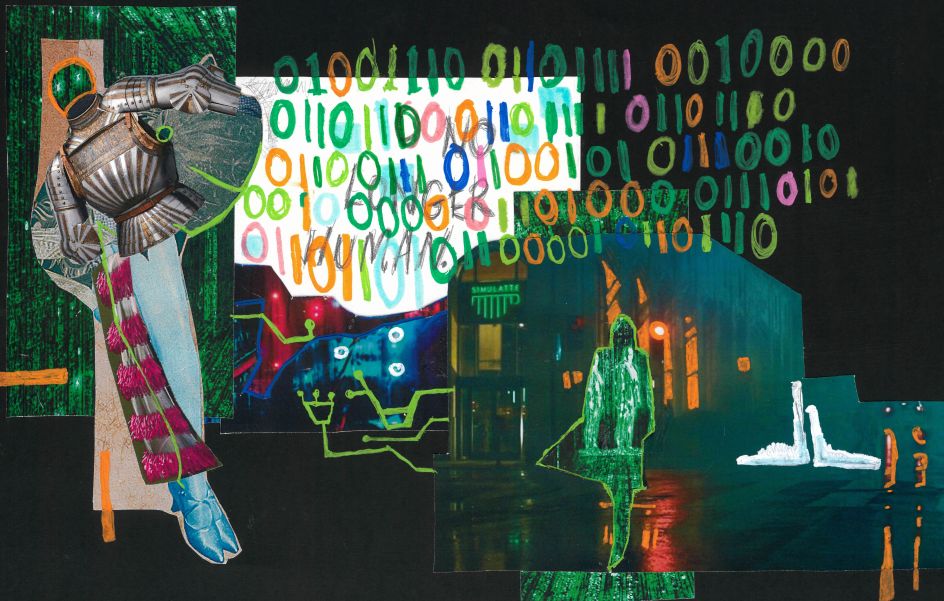
© Bethany Williams
And what are your fears?
The industry has changed a lot since the pandemic started. It's scary not knowing how things will go, especially given everything that's happening in the world right now. We're going into an industry filled with uncertainty and change. I just hope it's for the better.
What advice would you give to others following you into the industry
It's okay to feel like you don't know what you're doing and that you're not as good as your peers – because trust me, your peers probably feel the same way! Don't try to create what you think others expect from you. Trust yourself and your instincts. You've made it this far for a reason. Also, know what support or accessibility options are available to you and don't be ashamed to use them.

















